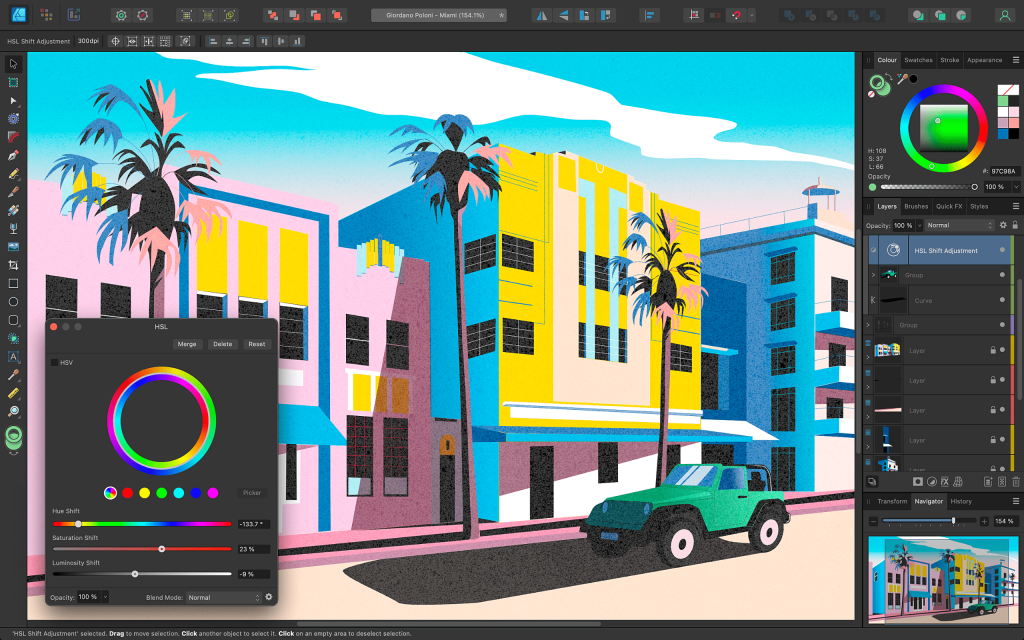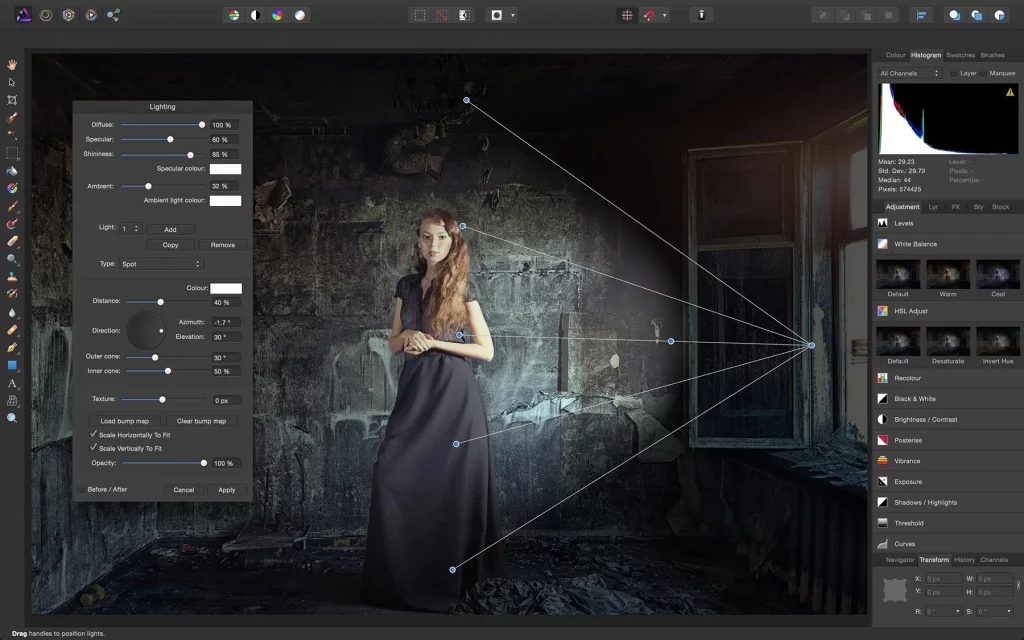What is Affinity Photo?
As a photography enthusiast, I find Affinity Photo to be an excellent alternative to Adobe Photoshop. Developed by Serif, Affinity Photo is a one-time purchase image editing software available for Mac, Windows, and iPad.
I love using Affinity Photo as it provides all the advanced photo editing tools I need in an intuitive interface. Key features like layers, masks, retouching tools, and filters are all there along with RAW editing and end-to-end color management. Affinity Photo’s rendering engine feels very fast and smooth even when working with large megapixel images.
One of the best parts of Affinity Publisher for me is that there is no subscription – I can use the software forever after purchasing a license. The pricing is also very reasonable compared to Photoshop. Affinity Photo integrates nicely with other Affinity apps like Designer and Publisher that I use for graphics work. I can easily switch between the apps to edit images, create vectors, layout designs etc.

Technical characteristics
- Platforms: Windows, macOS, Linux, Unix-like systems
- Software Type: Raster graphics editor
- Original Author: Spencer Kimball, Peter Mattis
- Initial Release: 1996
- Latest Stable Release: GIMP 2.10.30 (October 2021)
- Written in: C, GTK+

Features
Advantages
- RAW editing – Great RAW processing tools with presets, lens corrections, and developing adjustments. Rivals Lightroom.
- Retouching – Lots of filters, adjustments, and tools for retouching like blemish removal, liquify, and frequency separation.
- HDR & Focus Stacking – In-app merge to HDR and focus stacking capabilities for landscape and macro photography.
- Panoramas – Stitch multiple photos into panoramas easily right within Affinity Photo.
Disadvantages
- Learning curve – The interface and tools are different from Photoshop, so there’s a learning curve for those switching over.
- Compatibility – PSD support is good but not 100% perfect. Some complex projects may not translate fully.
- Extensibility – No plugins ecosystem. Limited ability to extend functionality compared to Photoshop.
- Advanced tools – Some niche tools for special effects, 3D, animation may be better in Photoshop.
What’s new
As a professional photographer, this photo editor is compatible with all major operating systems and can be instantly edited on a huge range of devices. Whether you want to make quick corrections or have the frequency separation capability for detailed retouching, Affinity Photo has a full set of advanced features built-in.
You can develop camera raw files in a dedicated, unbounded linear color space and make all the adjustments and corrections you need. The new version is more powerful than ever with a huge library of features, including white balance, red-eye correction, inpainting brush, and compatibility with graphics tablets.
With an unlimited number of possibilities and an easy-to-use interface, Affinity Photo is the top choice for photographers looking for a comprehensive and user-friendly editing experience.

System Requirements Affinity Photo for PC
- Windows 10 (64-bit)
- Intel or AMD processor with 2 cores minimum (4+ cores recommended)
- 8GB RAM minimum (16GB+ recommended)
- 2GB of GPU VRAM minimum (4GB+ recommended)
- 1GB of free HDD space

How to Install Professional Photo Editing Software
Open and run the installer, following the on-screen prompts. This will install the Affinity Photo app on your system.
Launch Affinity Photo. The first time you open it, you’ll see a registration dialog box.
Click on the “I have a serial” link in the registration dialog.
Enter your license key in the Serial Number field.
Click Register. Your license key will be verified and activated. Affinity Photo is now registered to your account.
Activation keys
- 33PTE-D8OT9-EB8P7
- 48F11-563QQ-PB9SS
- I3LK3-5AO63-7J42O
- 37RES-T4E3B-AG9PR
- M6S49-9PGS5-H7JPQ

Alternatives to Affinity Photo
- GIMP – Open source and free. Great community but the interface is less polished.
- Pixelmator – Full-featured image editor for Mac only. Easy to use with ML-enhanced tools.
- Capture One – Specialized for RAW processing and tethered shooting. Pricey but powerful.
- ON1 Photo RAW – Combines browsing, editing and effects in one app. Subscription-based.

FAQ
A: Key features include raw image editing, HDR merge, panorama stitching, overlaying and masking, advanced retouching tools, and non-destructive workflow through layers, filters, adjustments etc. It also supports OpenCL for GPU acceleration.
A: Compared to Photoshop, Affinity Photo has a lower price point with no subscriptions. The workflow and interface are different though it can open/export PSD files. It offers great value overall but lacks some niche features like 3D or animation.
A: The minimum requirements are a 64-bit Windows 10 or MacOS X platform, Intel or AMD multi-core processor, 8GB RAM, 2GB GPU VRAM and 1GB storage space. Higher specs are recommended for a smooth experience.
Conclusion – Download Affinity Photo
In conclusion, Affinity Photo is a professional photo editing product that is specifically engineered for creative and photography professionals. With its multi-layered composition and powerful editing tools, Affinity Photo provides a full-blown workspace for users to have full control over their images.

The desktop composition and preview engine make it easy to edit and retouch images, as well as work with shadows and highlights. Affinity Photo also allows for compatibility with the latest version of Affinity Designer, making it a versatile tool for creating multi-layered compositions.
As a photographer, I appreciate the power and performance of Affinity Photo, as it allows me to edit and retouch images with precision and efficiency. Overall, I am highly impressed with Affinity Photo and would recommend it to any creative professional looking for a top-notch photo editing software.
![Affinity Photo for Windows [Free Download] Tech Mine All Soft](https://techaminesoftreview.com/wp-content/uploads/2023/09/techamine-302x97.jpg)